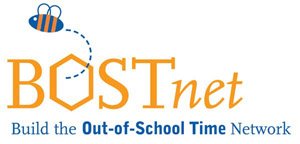
"Communication is key," we are always told. The Not-For-Profit field, and especially Out-of-School Time (including from early care through youth work), relies on "relationship building" and often those relationships are built over time and use a great deal of resources to manage. Site visits, meetings, cohorts, conferences, phone conferences, trainings, forums, mailings, events, and other point of organizational and professional contact take time and money. Recently, much of that money has evaporated. Increasingly (or is it immediately?) dollars are put to point-of-service and skipping over entire networks that have been grown or maintained over the past decade. Of course point-of-service money is needed, however, the infrastructure that was being assembled or had already been in place is also needed. The communications infrastructure of point-of-contact needed to maintain quality programs, a broad base of stakeholders, and professional development. Some of these points-of-contact may be provided by digital media.
Digital communications are not just communicating to funders, but looking at technology to reinvent how non-for-profits engage their stake holders as well as the fluidity that Out-of-School Time programs need to respond to as they meld their program or organizational message with the real-life cultures of the populations they serve. This is perhaps especially challenging for youth-serving organizations since the culture of youths are..... often incongruous with the culture of an organization, especially older mission driven organizations used to the brick and mortar one way control that print media allowed. Youth culture is garish, often filled with crude media images, commercialization and and now able to be uploaded to Youtube and linked to your organization at the click of a button. Scary stuff for staff used to well managed community bulletin boards or quarterly newsletters filled with passe clip art.
The change in communications does not just swap paper and ink for bites of information and blocks of color on a screen, it alters how information is created, consumed, and reinvented. The best example is how bloggers have eroded the traditional news media especially print. It is not just the Boston Globe feeling the burn, it is story after story being broken or covered by bloggers long before reporters with advanced degrees in journalism and years of experience ever get it off the wire. To communicate today is to do so faster, but also giving up a great deal of control over how content is used - or abused. There are risks to this move beyond the traditional fears of Out-of-School Time professions that youth served online may be connected to dangerous elements in society (time and again studies show youth to be more savvy on the WWW. than adults give them credit for). There is an unfamiliar feel to the way an organization has to expose more of itself as well as understand that associations will have to have increased management as well as more awareness by funders that they are seeing a fuller spectrum of who organizations serve and the connections they make - whether the organization enjoys that connection or not.
At the Roundtable a number of leaders and a handful of direct staff attended. It was telling that few direct service staff attended and that some who RSVPed were actually removed from the list by their supervisor. It is interesting to see that the more progressive programs saw all their staff as included in message creation and communication while the traditional organizations continue to think in terms of media marketing and message control - similar to how print has resisted digital and still does not know how to respond (outside of several newspapers shuttering their operations). This may be more of a style issue with organizations, with some able to support a common message while other more grassroots organizations allowing for a faster and looser control and more user generated/ staff generated content. It is hard to say which way is "correct" or whether both are appropriate for their audiences and typology of program.
Several organizations presented their work in communications to give some ideas about how to use the services out there as well as some challenges. Massachusetts Afterschool Partnership presented their MAP Facebook fansite work, while Boston Afterschool and Beyond discussed both the search features created by the BostonNavigator project as well as new work in using digital tracking to monitor youth using social services within the city. Teen Empowerment discussed their Teen Empowerment Youtube Channel and how this is used both by their youth as well as how more professional products are created and shared with funders. The Boston Children's Museum shared their free on-line curriculum especially made for and field tested by Out-of-School educators as well as highlighting that this work may expand - but will always remain free to the educators who need it. What is an interesting link between all these initiatives is that the users - viewer or whatever the new word may be - is not charged. The communication is not to create content that is paid for at the point-of-contact and this is in keeping with the spirit of the internet and new media as well as the challenge to the digital age - how do we pay for all these services?
Of those who RSVP'ed a very unscientific survey was taken using Survey Monkey. It showed that although Facebook and Linkedin use is high, few other communication services are used. This means that perhaps these services are not fitting to the organizations or perhaps the field, but also it may suggest that there is an opportunity for growth in Out-of-School Time communications.




No comments:
Post a Comment